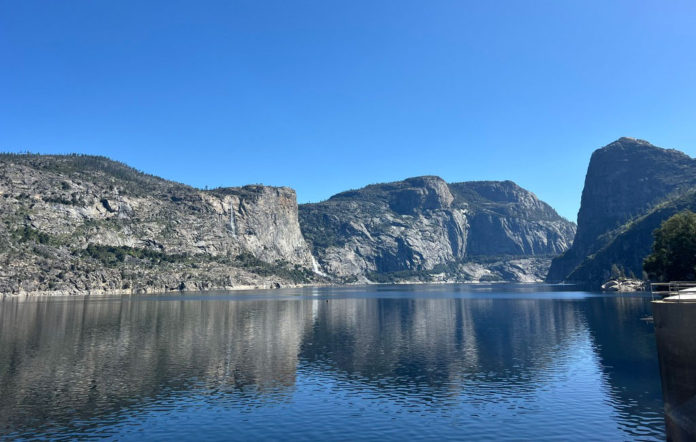
By Pierre Ratte
Yosemite Valley is known to many. But few know there was, and is, a second valley of extraordinary beauty in Yosemite National Park. It’s called the Valley of the Hetch Hetchy.
The name comes from a native Miwok grass that grew along the Tuolumne River that feeds this reservoir. Valley of the Hetch Hetchy is virtually a mirror image of Yosemite in a tighter configuration, its smaller “Half-Dome” on the right and its “El Capitan” on the left.
After a national debate between John Muir, the famed naturalist, and Gifford Pinchot, head of the U.S. Forest Service, it was decided that the public good of water supplies to San Francisco outweighed the public good of preserving a second rock canyon with hanging valleys and half domes. Hence, a 450-foot high dam was built, the canyon was flooded and the Hetch Hetchy reservoir was created.
Fun facts: An estimated 5 million people visit Yosemite annually, and 50,000 visit Hetch Hetchy. Yosemite has 5,400 parking spaces, while Hetch Hetchy has 40. Yosemite is seven miles long and one mile wide; Hetch Hetchy is three miles long and a half mile wide. Half Dome and El Cap rise 4,900 feet and 3,100 feet, while similar features of Hetch Hetchy rise 2,100 feet and 2,550 feet.
On April 18, 1906 at 5:12am, San Francisco experienced an earthquake. It wrecked the city’s water system, leaving standing buildings vulnerable to fires that continued for days. Approximately 250,000 residents (65%) were homeless, many taking refuge in the Potrero and Dogpatch districts.
Rebuilding the city stimulated plans to obtain water from the Sierras. The Federal Raker Act of 1913 gave San Francisco rights to build a dam and receive water from the Tuolumne River and Hetch Hetchy Valley.
The O’Shaughnessy Dam took eight years to build and was completed in 1923; the 160-mile aqueduct to San Francisco, much of it in tunnels, took 11 years to complete.
San Francisco receives about 10% of its power from hydro-electric plants downstream from the dam. Approximately 250 million gallons flow daily by gravity to San Francisco. Land under the dam and reservoir is leased from the National Park Service; rent was set at $30,000 in 1913 and has not been raised.
San Francisco earns $450 million a year from the sale of water.








